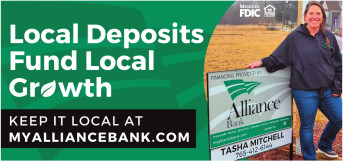The numbers matter because the state’s private schools could run out of spaces to accommodate the kids who want to move out of their public schools – and that could threaten the very goal of giving all parents choices for their children.
When the General Assembly authorized vouchers two years ago, educators estimated that there were some 20,000 available slots in private schools. Since then, a few have announced expansions or new locations.
![]() But private school operators told lawmakers this year that without boosts in the voucher amounts, they can’t afford to build more schools. Andrew Hart, director of the Oaks Academy in Indianapolis, told a Senate committee that his school already has a waiting list.
But private school operators told lawmakers this year that without boosts in the voucher amounts, they can’t afford to build more schools. Andrew Hart, director of the Oaks Academy in Indianapolis, told a Senate committee that his school already has a waiting list.
“There are more families that wish to enroll their children than we have capacity for,” Hart said in April. He told lawmakers that the voucher – which had been capped at $4,500 for elementary school – has been too low to cover all the costs of educating a student and therefore discourages expansion to make more room.
The General Assembly voted to raise the cap to $4,700 for the upcoming school year and to $4,800 for fall 2014. Still, Hart said the cost for one year of education at the Oaks Academy is $9,000 per student, which he said helps to pay for small class sizes and competitive salaries for teachers.
And the Oaks Academy isn’t alone. Many private schools charge tuition that’s significantly higher than the vouchers they accept – and higher than the per-student funding the state gives to public schools.
Private school leaders argue those public schools also receive funding for buildings and buses from property taxes, money that’s not available to private schools. And it’s unlikely the General Assembly will give them any of that cash.
That means the voucher program could be on a collision course with financial reality. Once existing private school slots are filled, the state could be facing new questions about whether parents really do have a choice – a dilemma that already exists in some smaller or rural communities where private schools are less available.
The voucher program was meant to close the gap between the haves and the have-nots – the families who could already afford to send their children to private school and those who just couldn’t afford the tuition. But once the slots are filled, that dilemma returns – at least for those students who aren’t lucky enough to nab an open spot in a private classroom. They’ll be left to attend public schools that already complain they’ve been hurt by the exodus of students – and therefore money – from their buildings.
Then lawmakers might be facing tough decisions about whether to spend more on vouchers and how to balance that against the amount spent on public schools. That will be sticky because many of the folks who argue for vouchers are the same ones who say money can’t solve the state’s education problems.
Lawmakers opted this year not to cap the total number of vouchers the state will issue to students who qualify for the program. But it’s not clear yet what they’ll do if the free market caps the program for them.
Article writer Lesley Weidenbener is managing editor of TheStatehouseFile.com, a news website powered by Franklin College journalism students.







